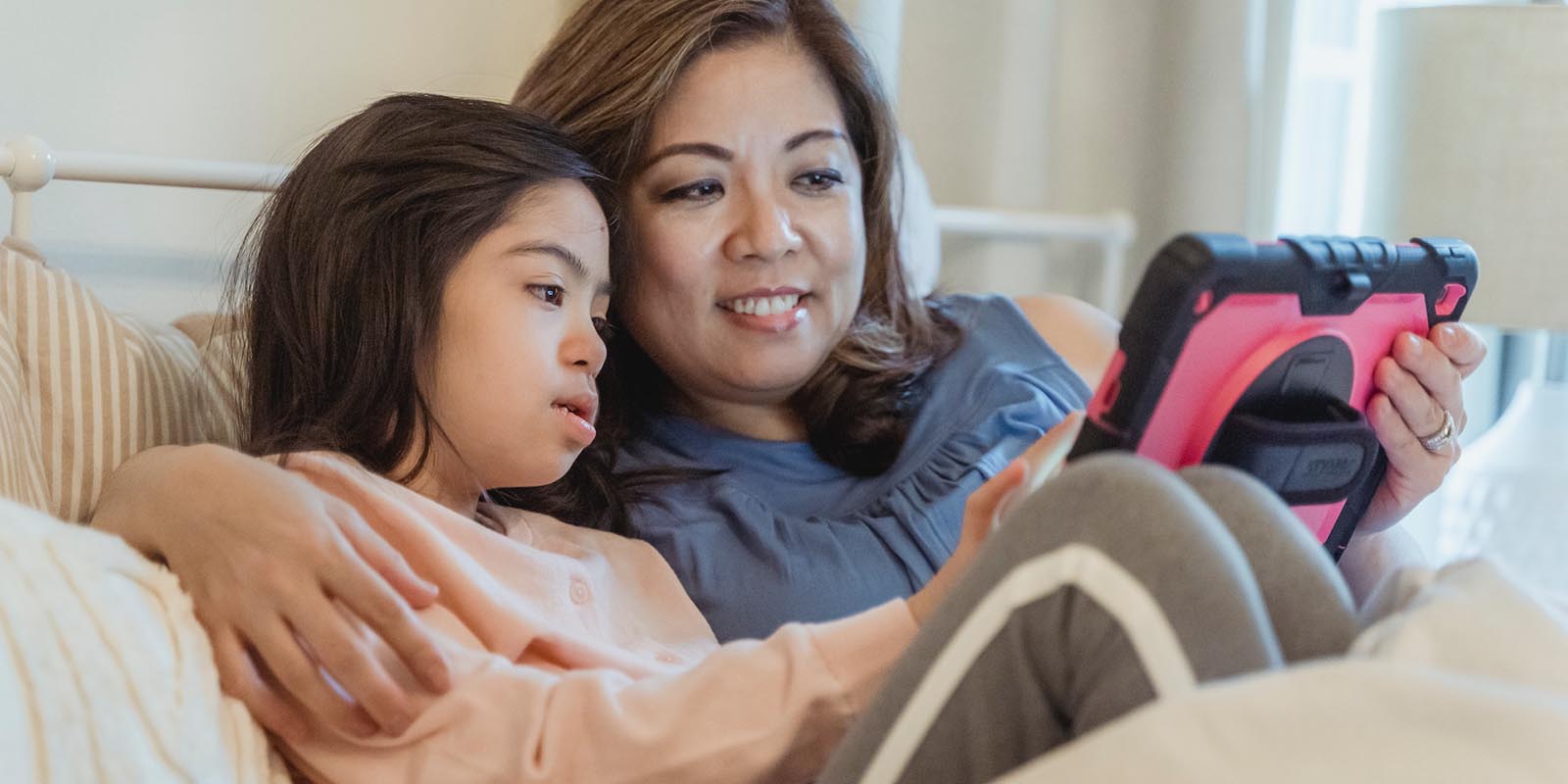
Assistive Technology
Helping People Maintain or Improve Independence and Ability
Individuals with and without disabilities can benefit from assistive technology. Assistive technology is an umbrella term that describes any device, piece of equipment, software program or product system that is used by an individual with a disability.
Assistive technology promotes well-being by helping people maintain or improve their independence and ability to interact with their environment in a meaningful way. People who have difficulty speaking, writing or typing, pointing, seeing, hearing, learning, remembering or walking may find assistive technology products helpful.
MMI specialists offer several types of assistive technology evaluations to address challenges. An individual’s assistive technology needs will depend on their disability.
Commonly Used Assistive Technology
- Adaptive switches: Joystick, simple push button and sip-and-puff switch.
- Computer software: Screen enlargement options, screen readers, speech-generating devices, voice recognition programs and website accessibility toolbars.
- Communication aids: Augmentative and alternative communication device (electronic or visual board that include pictures or symbols), keyboards/tablets and sign language gestures.
- Closed captioning: Transcribed text along the bottom of a screen allows individuals who are deaf or have hearing impairments to watch movies, television or internet video content. Closed captioning consists of dialogue and other audio such as music, laughter and sound effects.
- Hearing assistive technology: Alerting devices including audible signals and/or tactile or visual signals, cochlear implants and hearing aids.
- Mobility aids: Braces or orthotic devices, crutches, canes, walkers and wheelchairs.
- Physical Modifications in the built environment: Grab bars, ramps, and wider doorways to accommodate wheelchairs.
- Tools: Adapted pencil grips to help young learners with disabilities participate in educational activities, and zipper pulls to help children with hand-eye coordination needed to zip their coat independently.
Types of Evaluations
Activities of Daily Living
Activities of daily living are considered basic self-care activities and include feeding, dressing, grooming, bathing and toileting. Typically mastered in early childhood, these activities can pose significant challenges to individuals with disabilities and their caregivers.
Instrumental Activities of Daily Living are tasks that support an independent lifestyle. Examples are cooking, driving, using the telephone or computer, shopping and managing medication.
- Therapists in our occupational therapy department can help individuals with disabilities and caregivers problem-solve obstacles to independence in both areas of activities of daily living and instrumental activities of daily living.
- This may include recommending assistive technology or providing guidance for task adaptations that supports independence and/or simplifies caregiving.
- Fine motor skills: Writing aides, adapted materials or tools.
- Dressing, grooming and/or bathing aides.
- Adaptive utensils, dishes and/or cookware to support meal preparation and/or participation.
Augmentative and Alternative Communication
An augmentative and alternative communication evaluation with a therapist in our speech-language pathology department can benefit individuals who need to find other ways to communicate besides talking because of a speech and language disorders or other reason.
This type of evaluation will assess communication needs and identify one or more effective augmentative and alternative communication tools to help an individual actively participate in their daily routine or become an independent communicator.
Learn more about augmentative and alternative communication evaluations
Home Evaluation
Therapists in our occupational therapy department or physical therapy department can come to your home to evaluate your accessibility concerns and problem solve with you about potential environmental modifications or equipment needed to support safe caregiving and promote independence. Throughout this process therapists work closely with you and the durable medical equipment vendor you choose.
Areas evaluated for accessibility typically include:
- General home: entrances, primary living spaces, doorways, stairways.
- Bathroom: transfer safety, environmental supports and modifications.
- Bedroom: specialized beds, bedrails, transfer assist equipment.
Home Computer Access
Individuals who struggle to access a computer or other method of electronic communication, such as e-mailing or texting, benefit from an evaluation by therapists in our occupational therapy department or speech-language pathology department to identify technology that helps people independently access a computer and/or phone. These tools may also be used to control smart devices in the home (e.g., tv, lights, doors, etc.).
Some Examples of Home Equipment Include
- Adapted mouse.
- Eye trackers.
- Head trackers.
- Smart home peripherals.
- Voice activated devices.
Patient Resources
We believe that providing resources that are helpful and understandable is equally important to patient care.
You are Welcome Here
MMI is committed to ensuring access to high-quality care for all patients and fostering welcoming spaces for faculty, staff and students to learn and work. We believe that promoting a sense of community positively impacts well-being and cultivates long-term relationships that broaden MMI’s reach and deepen our understanding in the communities we serve.

